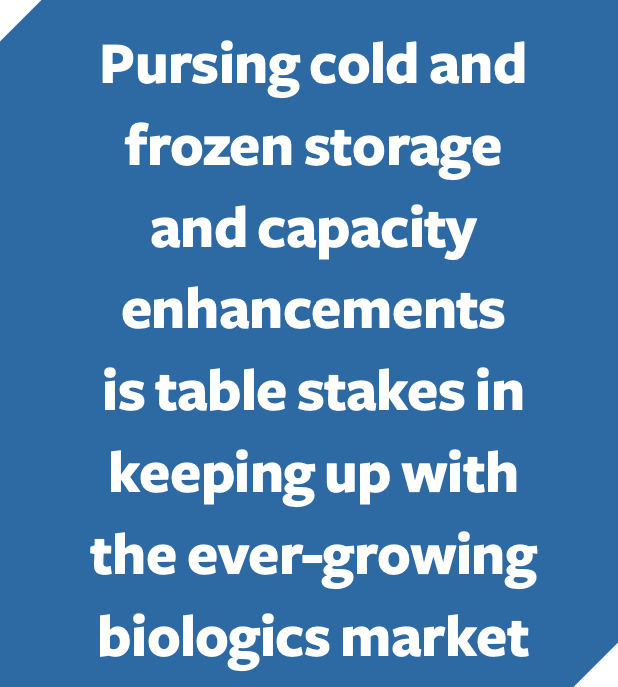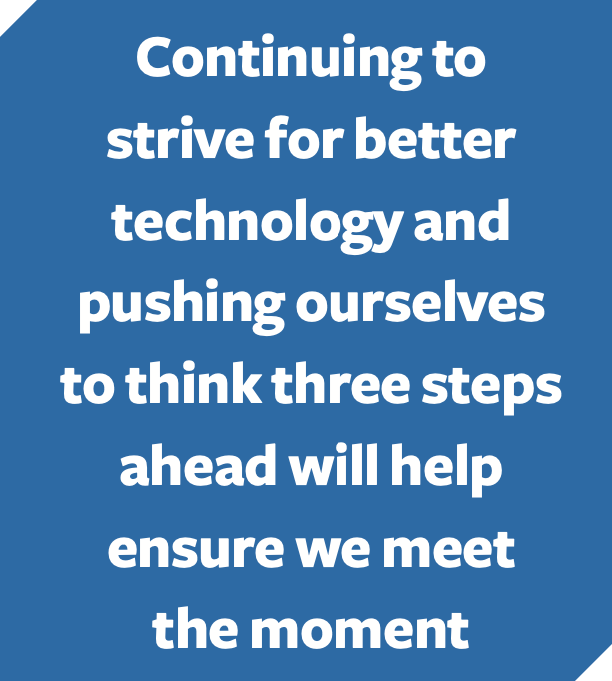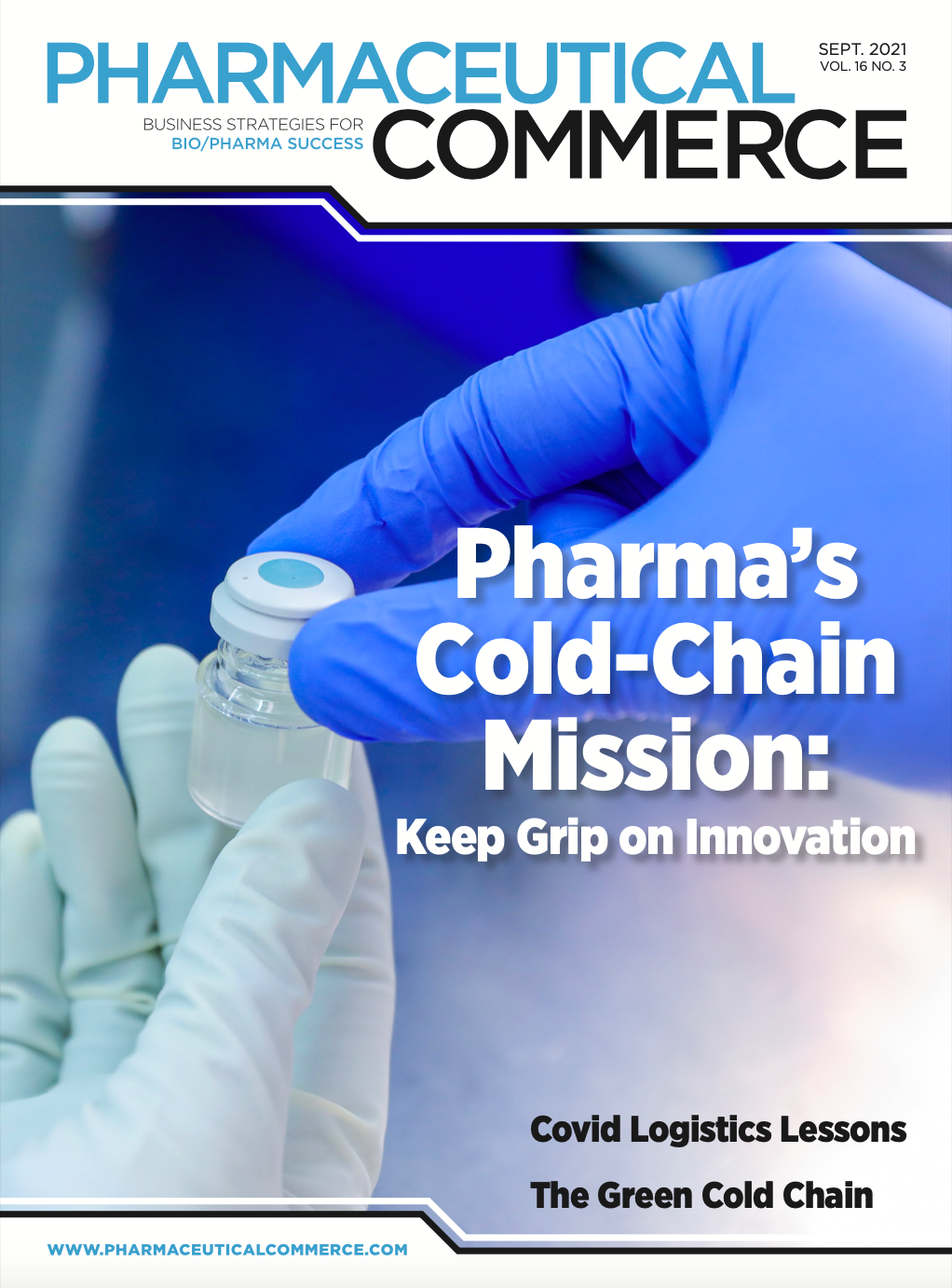The Future Heats Up Due to Cold Chain
Gains in temperature-controlled logistics, accelerated by the pandemic, have reshaped the landscape for global pharma distribution
Sunday, Dec. 13, 2020, was a day for celebration.
Like most of us around the world, I had been holding my breath in great anticipation for the first Covid-19 vaccine. The FDA had approved the Pfizer-BioNTech vaccine for emergency use less than 48 hours earlier, and those highly anticipated doses were rolling through our facilities, destined for the first shots in the arms of healthcare heroes across the country. For a healthcare veteran like me, it was a once-in-a-lifetime moment.
But we were not only celebrating one of the greatest medical achievements in modern history. This day also signified the dawn of a new future in healthcare, which many of us in the pharmaceutical industry had envisioned for years (if not decades), where drug development and approval is shortened, and there is a greater focus on biologics and therapies that can efficiently address today’s biggest health issues.
The critical role of cold chain
According to a recent McKinsey survey, 90% of top executives believe that the Covid-19 pandemic will fundamentally change the way business is done over the next five years. That trend certainly applies to the sterile pharmaceutical sector industry. Massive quantities of the Pfizer-BioNTech coronavirus vaccine had to be stored and shipped all over the world at ultra-cold temperatures, -80°C (-112°F), further catalyzing a massive investment and innovation effort across the pharmaceutical ecosystem focused on enhancing frozen and cold chain storage and transportation.
From powerful cold and ultra-low-temperature storage capabilities to extraordinarily precise tracking technologies (to within one foot anywhere in the network), I believe that the cold chain solutions rapidly brought to market or further optimized as a result of the Covid vaccine will dramatically alter global pharmaceutical distribution moving forward.
Chronic and lifestyle diseases—including cancers, respiratory, autoimmune and cardiovascular conditions, and Crohn’s disease, Alzheimer’s and other conditions—are the fastest growing disease categories in the world.
The pharma industry is entering into a period of rapid acceleration in the development of biologically derived, temperature-controlled drugs and therapies. In 2018, half of the drugs FDA approved required cold chain support, from refrigerated (2-8°C, 36-46°F and 15-25°C, 59-77°F) to ultra-cold (as low as -80°C). And, according to The Business Research Company, the biologics market is expected to grow at a compound annual growth rate (CAGR) of almost 15% over the next two years.
In addition to these biologics, the scientific miracle of cell and gene therapies will grow at a fast pace, potentially fighting off some of the most challenging cancers. These therapies start with sample tissue and end with a highly customized, highly personal remedy that requires the utmost care in handling in the right temperature environments.
But we cannot achieve these promising growth rates if these new vaccines and therapies cannot reach providers and the patients whose lives they intend to improve. Without highly effective and compliant end-to-end cold chain networks that mitigate the risk of temperature excursions during distribution, even to the hardest-to-reach and most remote locations worldwide, our industry—and the patient communities that we serve—will not thrive like they should.
Meeting the needs for today, planning for tomorrow
The world’s successes associated with Covid-19 vaccine delivery would not have been possible without seamless partnerships between government agencies, pharma manufacturers and third-party logistics providers (3PLs). Healthcare logistics expertise was essential in engineering, organizing and operating cold supply chains of the highest integrity and ensuring quality at every point in storage and transportation.
These partnerships will be even more necessary to keep pace with the expected growth in the biologics market. Significant focus and investment by all parties involved must continue across the cold chain, but particularly in four key areas: storage and capacity, technology, quality assurance and deep expertise from a skilled workforce.
Consistently pursing cold and frozen storage and capacity enhancements is table stakes in keeping up with the ever-growing biologics market. The expansion and construction of new, good manufacturing practice (GMP)/good distribution practice (GDP)-compliant cold-chain focused facilities in strategic locations for active pharmaceutical ingredient (API) manufacturers, drug producers, fill-and-finish operations, distributors and customers help ensure tightly managed storage, distribution and quality assurance for products.

The coolers and freezer farms in these facilities serve as jumping off points for temperature-controlled transportation via air and ground freight and require critical capital investments for a strong, future-proof global cold chain. However, the pandemic has shed greater light on the need for improved accessibility to biopharmaceuticals in developing countries, thus driving a greater focus on enhancing non-static elements of the cold chain, such as mobile ultra-low temperature freezers and dry-ice replenishment locations, to extend the reach into remote areas worldwide.
While storage and capacity are table stakes, technology is needed to deliver transparency and visibility across the cold chain, regardless of location and transportation mode. From small packages to large freight shipments, a range of temperature-controlled and monitored packaging systems designed to keep biologics at their required temperatures is essential for delivering much needed vaccines and therapies “on-time” and “on-temperature.” Shipments with technology-enabled (temperature and location) monitoring provide essential visibility and transparency into the precise location of covered pallets, boxes, trailers and packages within a given network. When used correctly, including consistent updating and calibration, this creates much-needed certainty that products have maintained the correct temperatures throughout transport, thus avoiding potentially massive implications with efficacy and endangering overall trust between drugmakers, healthcare providers and even patients.

In addition, having a single, globally integrated quality management system (QMS) that is independent and supported by a validated technology platform enhances visibility and control over critical quality metrics. A robust QMS ensures consistency across storage and transportation, and provides a framework of checks and balances to ensure people are trained, processes are documented and are being followed, and plans are in place for exceptions. Companies without a robust QMS will struggle to find opportunities in this new future of cold chain. Because, regardless of location, we in the healthcare logistics field passionately believe that the lives and well-being of patients around the globe depend on the safe arrival of the critical healthcare products.
Finally, maintaining and growing a skilled workforce at all points along the cold chain process must be a top priority. It is essential to have dedicated, fully trained cold chain experts on the ground throughout the process to ensure critical packages are moving smoothly from starting point to end location, and not effected by unexpected occurrences that might jeopardize the shipment—weather, traffic issues, etc. Logistics experts are the watchful eyes required to closely monitor packages around the clock and develop contingency plans to design new routes, replenish dry ice and that keep packages on track and on time, no matter the situation.
In addition, as we saw with the massive global distribution effort for the Covid-19 vaccine, skilled and knowledgeable logistics experts can advise on the exacting regulations and requirements for transport and storage, country by country, for vaccines and emerging biologics. Examples include:
- What strict rules apply in this nation?
- What environmental standards must be met in that country?
- Where is specialty labeling required?
- What are storage regulations?
- How long is the packaging validated for?
Skilled and savvy logistics experts will know these answers up front, saving time and, yes, again, ensuring quality.
Looking forward, together
This pandemic has driven investments to improving cold chain logistics and is more important than ever before. That sentiment is only getting stronger as time goes on, which is why we have to continue to be unstoppable and relentless in our collective pursuit of providing the best possible solutions to support the communities we are a part of and the patients we serve.
There will always be challenges that arise and obstacles to overcome, including new regulations and policies, pressures to meet cost efficiencies, and getting temperature-controlled drugs and therapies to people in remote and rural areas around the world. However, continuing to strive for better technology, building on the lessons learned during the pandemic and pushing ourselves to think three steps ahead will help ensure we meet the moment and collectively deliver this new and exciting future of healthcare.
About the author

Wes Wheeler is President of UPS Healthcare.
